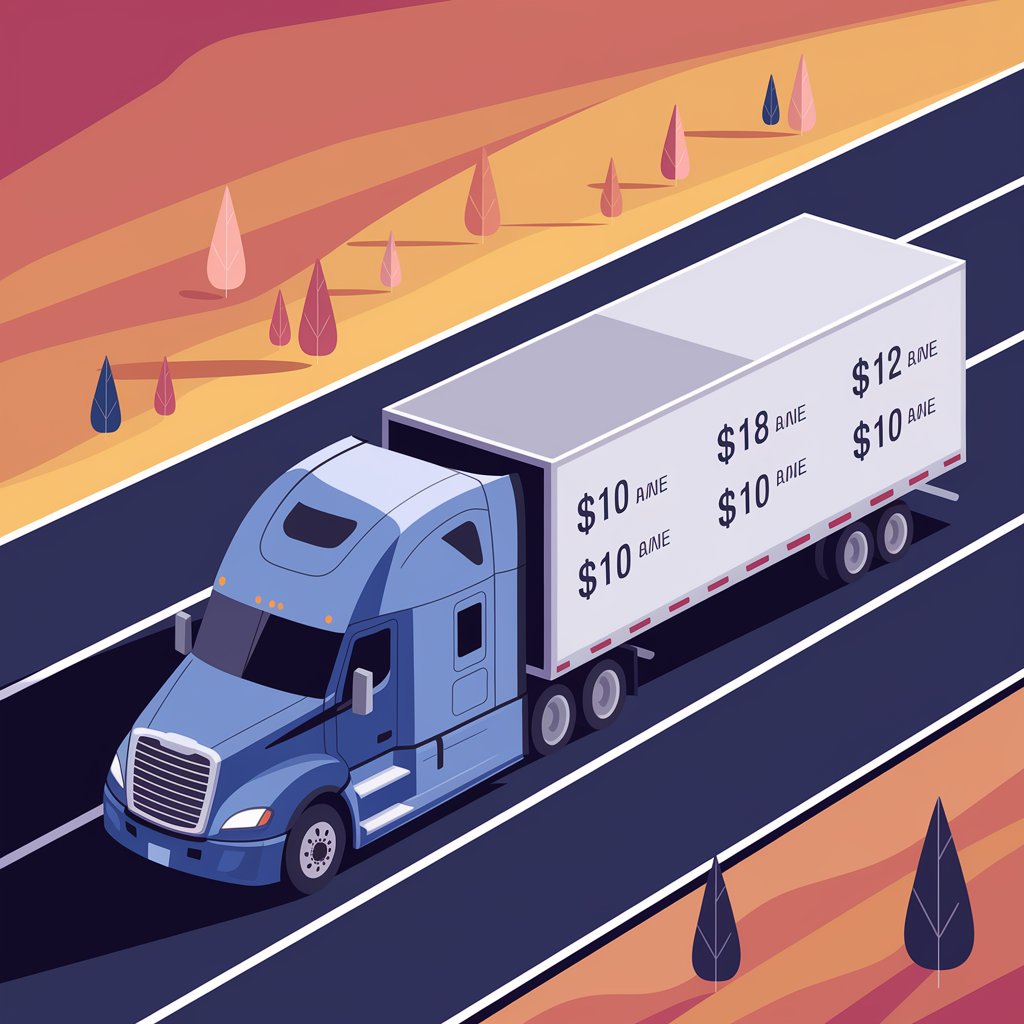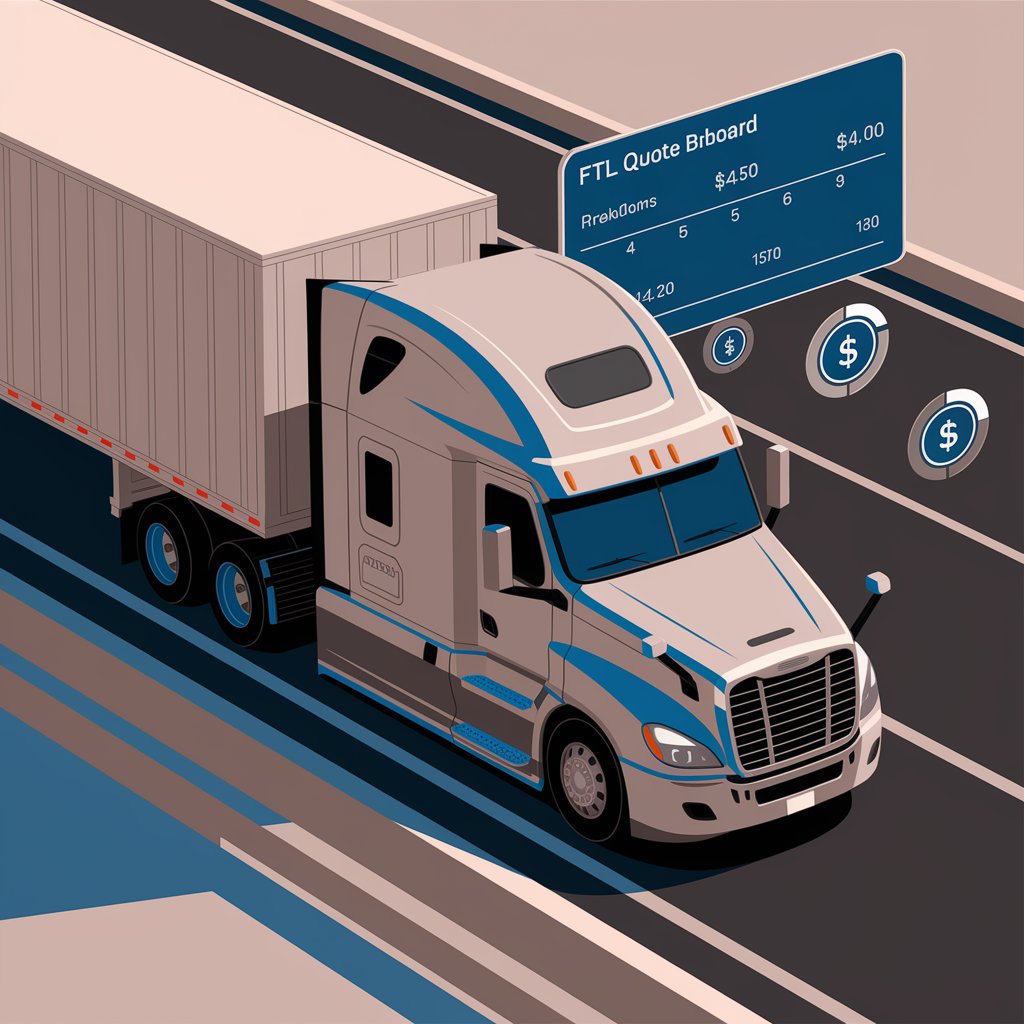Full Truckload Rates: What They Are and How They Impact Your Shipping Costs
This guide covers what full truckload rates are, what affects them, and how to estimate them accurately.

🚛 What Is Full Truckload (FTL) Shipping?
Full truckload shipping refers to the use of an entire truck’s capacity to ship freight from one point to another. It’s commonly used when:
- 📦 The load is large enough to fill a trailer (typically 15,000+ lbs)
- 🛣️ A direct, faster route is preferred with no cargo transfers
- 🔒 Shippers want exclusive use of the trailer for safety or speed
Unlike less-than-truckload (LTL) shipments, FTL shipments are not consolidated with other cargo, which means better handling, fewer stops, and often shorter transit times.
💰 What Are Full Truckload Rates?
Full truckload rates are the total cost charged by a carrier to transport a full trailer load of freight. These rates are typically quoted as:
- Flat Rate per Load – Fixed total price for the shipment
- Rate per Mile – Price per mile based on distance
- Rate per Hour – Used in some regional or special-use cases
The average cost per mile in the U.S. can vary from $2.00 to $3.50 per mile, depending on the lane, equipment type, and market demand.

📊 Factors That Affect FTL Rates
Full truckload rates aren’t fixed—they’re influenced by several dynamic variables:
Factor | Impact |
🛣️ Distance & Route | Longer routes generally cost more but offer better rate per mile |
⛽ Fuel Costs | Diesel price fluctuations directly impact surcharges |
📆 Seasonality | Peak seasons (e.g., Q4, harvest) drive up prices |
🚛 Truck Type | Dry van, reefer, flatbed—all have different base rates |
🧭 Deadhead Miles | Carriers charge more if return trips are empty |
🕒 Dwell Time | Delays at pickup or delivery may add detention fees |
📦 Freight Characteristics | Oversized, hazmat, or fragile loads cost more |
📍 Regional Differences in Full Truckload Rates
FTL rates vary widely by region due to demand and availability:
- High-volume lanes (e.g., CA to TX, Midwest to Northeast) offer competitive rates
- Backhaul lanes may be cheaper if they help carriers reduce deadhead miles
- Rural or remote deliveries often incur accessorial charges
📈 Use freight rate indexes or tools like DAT RateView, Truckstop, or Linbis to monitor regional pricing.

🧮 How to Calculate Full Truckload Rates
Here’s a simplified formula for FTL pricing:
FTL Rate = Base Rate per Mile × Total Miles + Fuel Surcharge + Accessorials
Example:
- 1,000 miles × $2.50/mile = $2,500
- Fuel surcharge = $150
- Accessorials (e.g., liftgate, loading wait time) = $100
- Total Rate = $2,750
💡 Tip: Always confirm what’s included to avoid surprise charges.
🔁 Contract vs. Spot FTL Rates
Rate Type | Use Case | Stability | Flexibility |
📄 Contract Rate | Long-term, repeat shipping lanes | ✅ Stable | ❌ Less flexible |
💬 Spot Rate | One-time or urgent loads | ❌ Volatile | ✅ Very flexible |
During tight market conditions, spot rates can spike, so locking in contract FTL rates offers cost predictability.

📲 How to Get Accurate FTL Quotes
To receive precise full truckload quotes:
- ✅ Provide accurate weight and dimensions
- 🗺️ Share full pickup and delivery ZIP codes
- 📄 Disclose any special handling requirements
- 🕒 Be clear about appointment times or delivery windows
Digital freight platforms like Linbis let you request, compare, and book FTL quotes in real time, automating what used to take hours.
🏁 Final Thoughts
Full truckload rates are a key driver of shipping costs in high-volume logistics. By understanding the variables that impact pricing—and using the right tools to monitor them—you can reduce uncertainty and gain more control over your freight spend.
🚚 Ready to optimize your FTL shipping? Start comparing rates, analyzing trends, and working with carriers that match your lanes and business goals.
